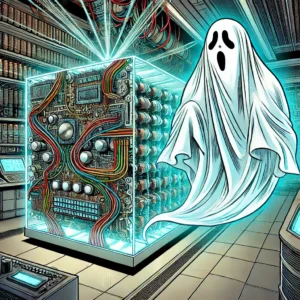The one thing keeping cryptographers awake at night is the looming threat of the “quantum apocalypse”, the time when quantum computers become powerful enough to break the ciphers we currently all rely on to keep our bank accounts, transactions and communications private.
Most of the encryption systems that we have used for the last thirty years depend on public key ciphers and key exchange mechanisms whose security relies on the fact that computers are not that good at prime factorisation. Quantum computers will change all of that, with Shor’s algorithm ready to break open Pandora’s box once the engineers figure out how to make them work reliably.
The problem is that the qubits that replace the binary “bits” in a classical computer are subject to all the fuzzy uncertainty of the quantum world and making them behave while preserving their unique and useful properties is a difficult balancing act.
For a long time the best a quantum could achieve in practice was to factorise 21, nowhere near the size of a 2048 bit RSA key that would be used for sensitive data, but recently a Chinese research team used a D-Wave quantum computer to crack a 22bit key for RSA or an AES cipher, and this seems to be a pretty important step forward.
Of course the history of codes and ciphers has been a battle between those designing them and those trying to break them, so this is nothing new. More powerful encryption systems are being developed to resist the new quantum attacks. The difference now is the central role that privacy and secrecy (need to) play in all our lives. There will be an increasing need for mathematicians, physicists and engineers who can work in the field to protect us.
